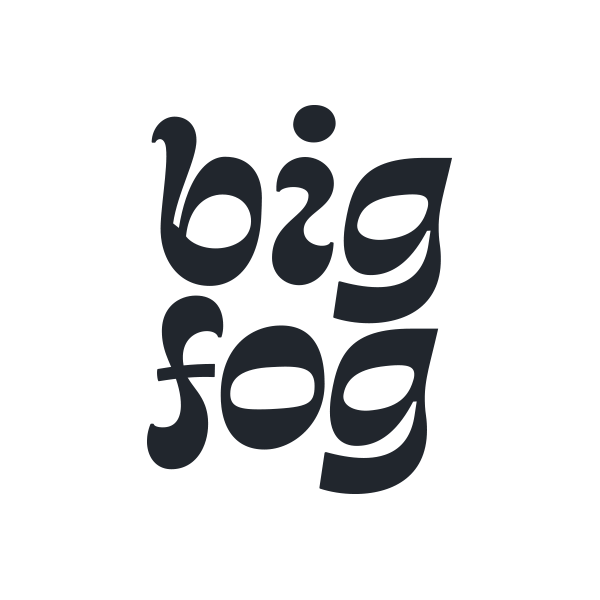
by Brian Dove
February 09, 2023
Want to learn type design? Check out How to Design Fonts from Blaze Type.
Pulling from the Past
Sometime in early 2021, while partaking in one of my favorite winter pastimes (sitting by the fireplace browsing the best site on the Internet, Fonts In Use), I came across Gayot. This cheeky, lowercase only display face was designed by Jean-Pierre Gayot and issued as dry-transfer type by Mecanorma as a winner of their 1973 International Type-Style Contest. The tiny round counterforms and bottom-heavy design caught caught my eye, prompting me to dive into all of the uses of this typeface I could get my hands on.

Gayot (1973) character set showing both styles, Gayot Noir (solid) and Gayot Ombre (shadow). Image courtesy of Florian Hardwig on Flickr.
Sitting somewhere between groovy bell-bottomed typefaces of that era like Village and Bottleneck, and techno-futurist fonts like Paperclip and Amelia, Gayot felt like a refreshing expression of ‘70s psychedelia. With no existing digital interpretations that I could find, I eagerly jumped into sketching out some ideas for a Gayot revival.
A Textural Nightmare
My initial explorations were to do a pretty dead-on revival with the addition of uppercase, which wasn’t included in the original design. I sketched, digitized, and typeset, and nothing felt quite right. The proportions and rhythm of the original face worked well for some things (this Neil Young single cover, for example) but in black and white on a screen, there was something a little too unsettling about the overall texture1.
Eventually, I settled on a design with generally wider proportions, larger counterforms, and no descenders. While I tried my damndest to even out the general texture of the typeface as much as possible, I was encouraged by Andreas Stötzner and Thomas Phinney’s responses to my request for critique on Typedrawers.

Learning to embrace the textural nightmare with the help of the Typedrawers community
As a relatively amateur type designer, I was (and am) still a bit doubtful of my own eye, so it was reassuring to hear that the “nightmare” texture is part of the original’s charm. That feedback, along with the other input I got from the Typedrawers community, encouraged me to push this closer to the finish line.
Since Gayot New is designed explicitly for display purposes—best used short and large, in logos or headlines—I decided that if the texture generally felt good in one or two word settings, then it was working. If you’re typesetting paragraphs in Gayot New, don’t come crying to me when it looks hellish, ’cause it will!

Basic character set, numerals, and some punctuation/symbols
Expanding the Character Set
After finishing up the basic latin alphabet, work began on adding diacritics, symbols, punctuation, numerals, and some additional characters to provide additional language support. Gayot New complies with Underware Foundry’s Latin Plus character set, supporting over 200 Latin alphabet languages. Extending the character set provided a lot of fun challenges and learning experiences. For example, in slashed letters like Ð and Ø, the tiny round counter had to be enlarged just enough to allow the right size slash to pierce through, but not so much as to make the counter look significantly larger than other characters. The designs of Æ and the ij ligature (commonly used in Dutch) are particularly satisfying with the letters nestled and combined in a perfect *chef’s kiss* kinda way.

The Future of Gayot New
Finishing this up in November meant I got to test it out on several printed goods we were preparing for the winter market season. The original Gayot included a drop shadowed style called ‘ombre’, or shadow in french. This style was frequently in use in the historical examples, so I expanded on it in Illustrator with outlined text and a vertical shadow. This has been my favorite way to use Gayot New, as you’ll see in a lot of examples and marketing materials around this font. A shadow style of Gayot New is in progress and will be released as a separate style, expanding Gayot New into a larger family sometime in the near future2. Some small spacing/kerning adjustments and perhaps some alternate characters will be included in future updates as well.
I’m really excited about how this typeface came out and even more excited to see how people use it. I’m grateful to the community of type enthusiasts that gave me feedback on this, Florian Hardwig for relentlessly documenting type history on Fonts in Use and Flickr, and of course Jean-Pierre Gayot for designing the charming little weirdo that got me started down this path.
NOTES
1. When we talk about texture in type design, we’re referencing the overall balance of positive and negative space—or black and white—on the page when typesetting. Good texture is achieved through a balance of stroke weight, letter spacing, and proportions. It’s important to take into consideration the intended size and purpose of the typeface when evaluating its textural balance.
2. I’m not sure when I’ll get around to finishing this, but if you have a need for the outlined style please reach out and I’ll try to expedite the process!
